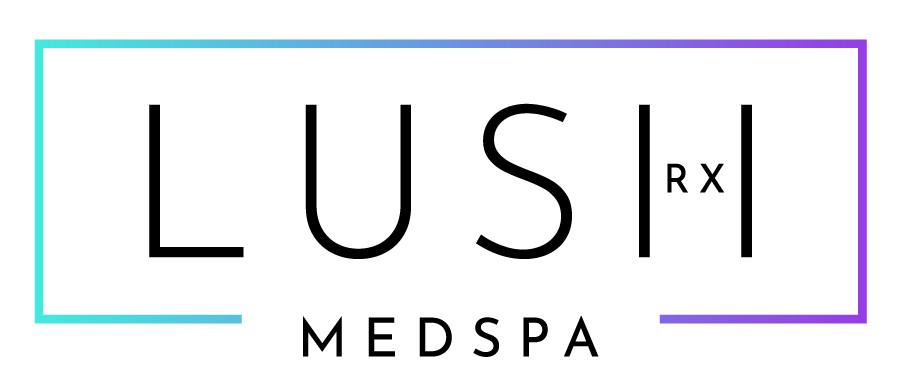What is the Difference Between Dysport and Botox?
Welcome to Lush RX in Bellaire, TX — your go-to med spa for all things beauty and rejuvenation! Today, we're diving into a popular question: what is the difference between Dysport and Botox? These two injectables are widely used to smooth out wrinkles and fine lines, but what sets them apart? Let's break it down.
At Lush RX, we know choosing the right treatment can be daunting. With so much information out there, it's hard to know the differences and similarities between Dysport and Botox to make an informed decision. But we’ve got your back! Let's explore these two neurotoxins and see how each can help you turn back the clock.
What Are Neurotoxins?
Neurotoxins like Dysport and Botox are powerful tools in your anti-aging arsenal. Both are made from botulinum toxin type A and work by temporarily relaxing the muscles that cause wrinkles. When injected into specific facial muscles, neurotoxins block nerve signals, preventing muscle contractions that lead to dynamic wrinkles.
Both Dysport and Botox are FDA-approved and have been used safely and effectively for many years in anti-aging and other applications. Despite their similarities, there are key differences between the two that may influence your decision.
What is the Difference Between Dysport and Botox Formulas?
One of the primary differences between Dysport and Botox lies in their formulations. Botox contains larger protein molecules compared to Dysport. This difference affects how each product spreads and interacts with the body.
Dysport's smaller protein molecules allow it to diffuse more widely once injected, covering a larger area with fewer injections. This characteristic makes Dysport particularly effective for treating larger areas. On the other hand, Botox's large protein molecules result in a more localized effect, making it ideal for smaller areas that require more precision.
Treatment Areas for Botox and Dysport
Both are versatile treatments, and both Botox and Dysport can be used in various areas of the face. Here are some ideal treatment areas for each injectable:
Botox Treatment Areas
Forehead lines: Smooths horizontal lines on the forehead.
Glabellar lines: Targets the "11" lines between the eyebrows.
Crow's feet: Reduces wrinkles around the outer corners of the eyes.
Bunny lines: Minimizes lines on the nose.
Dysport Treatment Areas
Forehead lines: Effective for larger treatment areas.
Glabellar lines: Treats frown lines between the eyebrows.
Neck bands: Can be used to reduce vertical lines and improve the neck’s appearance.
While both neurotoxins can be used to treat similar areas, the choice between Dysport and Botox often depends on the specific treatment area and the desired effect. For example, while both can be used to smooth forehead lines, Dysport may be more effective for a larger surface area while Botox may be best for a more localized area of wrinkles.
Dysport vs. Botox: Onset of Results
When it comes to the onset of results, Dysport and Botox have different timelines. Dysport results are typically faster, with some noticing improvements within 24-48 hours after treatment. This faster onset can be a significant advantage if you're looking for quick results before a special event or occasion.
Botox, on the other hand, generally takes a bit longer to show its effects. Most begin to see improvements within 3-5 days, with full results appearing around 7-10 days post-treatment. While the onset is slightly slower, Botox's precise targeting can provide more controlled and predictable outcomes.
Dysport vs. Botox: Length of Results
Both Dysport and Botox offer temporary results, but the duration can vary. Dysport typically lasts around 3-4 months, and some people require more frequent touch-up sessions with Dysport than they do with Botox.
Botox generally provides longer results that last about 4-6 months. However, individual experiences can vary, and some may find that their Botox results last slightly longer or shorter. Regular maintenance treatments are recommended for both injectables to keep wrinkles at bay and maintain a youthful appearance.
Which Should You Choose?
Choosing between Dysport and Botox depends on several factors. Here are a few considerations to help you decide:
Skin Goals: If you're looking to treat a larger area, such as the forehead, Dysport's wider diffusion might be more suitable. For more precise treatment, such as crow's feet or glabellar lines, Botox's targeted approach could be the better option.
Onset of Results: If you need quick results for an upcoming event, Dysport's faster onset might be more appealing. However, if you're not in a rush, Botox's slightly slower onset may still provide excellent results.
Length of Results: Botox may last a bit longer than Dysport, so consider how often you're willing to return for maintenance treatments.
Ultimately, the best way to determine which treatment is right for you is to consult with the experts at Lush RX. Our experienced practitioners will assess your unique needs, your unique skin tone, and your skin’s condition to help you choose the most suitable injectable for your desired results.
Get Your Dysport and Botox Treatments in Bellaire, TX!
In our ongoing quest for youthful skin, neurotoxins are powerful allies. While they share many similarities, understanding the differences between Dysport and Botox can help you make an informed decision. Whether you’re leaning toward Dysport's quick onset and wider diffusion or Botox's precise targeting and slightly slower onset, both of these rockstar aesthetic treatments offer effective results for a smoother, more refreshed appearance.
At Lush RX, we're dedicated to helping you reach your beauty goals with personalized care and expert guidance. Contact us today or book an appointment to discover which neurotoxin treatment is right for you. Start your anti-aging journey today!



